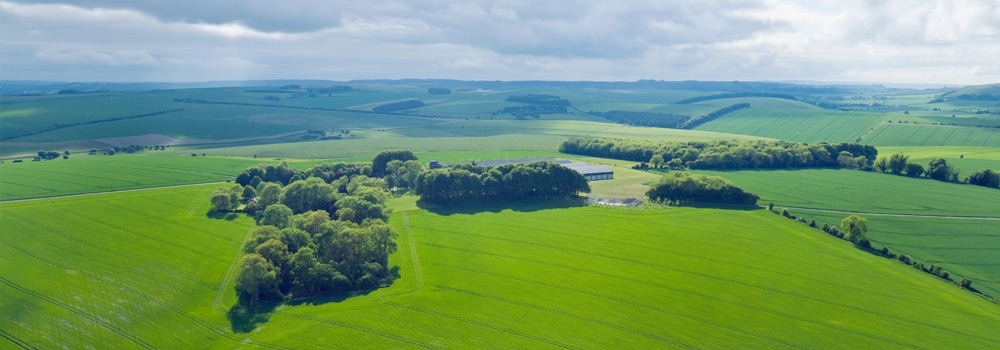From: Agriculture.com
Date: January 15, 2020
By: Mike McGinnis
Top 10 Red Flags For Farmers Using 1031 Exchange
This investment vehicle can help farmers build wealth.
DES MOINES, Iowa — More and more farmers and landowners want to know how to use the Internal Revenue Code Section 1031 (known as section 1031 exchange) to defer taxes and build wealth on the purchase of replacement property.
While not widely understood, the details of transacting a 1031 exchange can be sifted through by use of a qualified intermediary.
This was a topic covered in a presentation to farmers, landowners, and brokers at this week’s Land Investment Expo.
David Brown, president of IPE 1031, a nationwide company that offers intermediary services for various types of exchanges, was unable to get through the first five slides of a 50-slide presentation before being inundated with multiple questions on carrying out 1031 exchanges.
A 1031 exchange is defined as a like-kind exchange of real property that allows a person who has sold that asset to invest the returns into a new property to avoid capital gains taxes.
The U.S. government wants to incentivize people to continue to keep their investments in the economy, Brown says.
In simple terms, it’s a tax deferral tool, allowing people to invest in more appropriate assets that suit their particular situation.
Cash flow and Wealth Benefits
The section 1031 exchange law, enacted in 1921, has been helping farmers and landowners build wealth and keep cash flow in their operation for decades.
“Folks who were trading a horse for a horse didn’t have to pay the tax on that transition,” says David Brown, president IPE 1031.
“Those are time value dollars to build my investment holdings vs. ending up investing $100,000 less than I thought I could.”
1031 Exchange Misunderstandings
The biggest misnomer about 1031 exchanges is the idea that folks are coming out of transitional agricultural properties around metropolitan areas and trading into outlining assets in more rural communities.
“I’m not saying those transactions don’t happen. But they are a fraction of a percentage of 1031 exchange transactions that we handle,” Brown says.
For instance, farmers are not buying huge tracts of land in rural areas with money that they got from selling off land to developers near a big city.
“In fact, there are several studies that show 1031 exchanges don’t drive farmland values higher. Instead, this type of investment tool keeps farmland values in-check or reduces them because they contribute to an increase in supply of property because people are not afraid to sell their land. And without section 1031, you wouldn’t have the supply of land, pushing prices up due to low available inventory,” Brown says.
Top 10 Exchange Red Flags
While 1031 exchanges can be beneficial to farmers selling and replacing property assets, understanding the legal aspects of them can be very confusing. At this week’s Land Investment Expo, Brown shared these top 10 exchange red flags with a room full of farmers, landowners, and brokers.
- The disqualified qualified intermediary:
Taxpayers seeking the services of a qualified intermediary company, (such as Brown’s company IPE 1031), should inquire into the company’s ownership. A disqualified intermediary cannot be the taxpayer’s attorneys, accountants, real estate agents/brokers and employees. - Not asking the right questions:
The key to a successful exchange transaction is planning and consulting with a qualified intermediary, as well as tax and legal advisers. - Unassignable real estate purchase agreements:
Under section 1031, the farmer conducting the exchange is obligated to assign the purchase agreement to a qualified intermediary. - Trading down in value:
To defer all tax on an exchange transaction, three general rules must be satisfied. First, the value of the farm or property that you are buying must be greater than or equal to the value of the property sold. Secondly, all equity from the sold farm or property must be reinvested into the new investment property. Third, all debt relief from the sold farm or property must be replaced with equivalent new debt on the replacement property. - Not utilizing the power of reverse exchanges:
A reverse exchange can help an exchanging taxpayer with the ability to locate and acquire the most suitable property with reduced time pressures. - Not documenting the exchange:
The documentation requirements of section 1031 are strict and the requirements for accuracy cannot be overlooked. A qualified intermediary must ensure that technical exchange document terms, notices, identifications, and other requirements are handled correctly. - Prohibited related party transactions:
A farmer or any taxpayer cannot use a 1031 exchange transaction to buy a property from a relative. Exceptions and structuring alternatives do exist. - Flipper and dealer status:
To qualify for section 1031 treatment, property must be held for investment or use in a trade or business. Property flippers and dealers are not eligible for section 1031 treatment. - Settlement statement problems:
Taxpayers involved in 1031 exchanges cannot use proceeds from the property that they sold to pay expenses such as rents and deposits, loan costs, and expenses unrelated to the property. Plus, the new investment property cannot be overfinanced. - Partnership issues:
While partners of a multimember LLC may desire to sell the partnership property and use those proceeds to exchange into a separate replacement property, this is not permitted under section 1031.
Read Full Article: https://www.agriculture.com/farm-management/business-planning/top-10-red-flags-for-farmers-using-1031-exchange
Request 1031 Exchange DST Property Listings
Please complete the information below to register for access to current 1031 exchange replacement offerings.
We respect your privacy. We Promise To Not Sell Your Information Ever.
"*" indicates required fields


